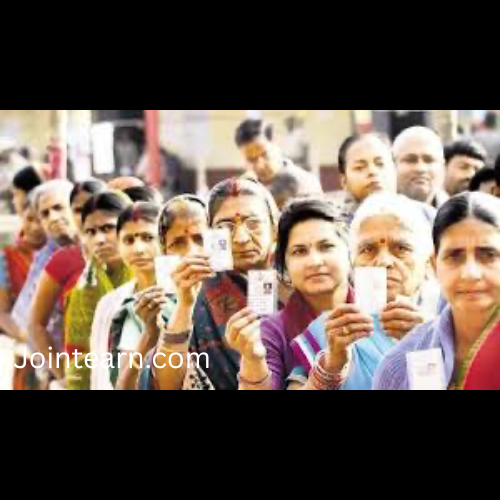
Patna, October 28, 2025 — As Bihar heads into another fiercely contested assembly election, one truth remains as immutable as the Ganga that flows through it — in Bihar, caste trumps religion. In a state often hailed as the heart of India’s political experimentation, it is caste arithmetic, not religious sentiment, that continues to shape the course of electoral politics.
Even as parties across India embrace religious mobilisation as a vote-pulling strategy, Bihar remains an exception. The reason, as political analysts point out, lies deep in the state’s social fabric — the centuries-old varna-based caste hierarchy that still dictates political allegiances and social loyalties.
The Enduring Weight of Caste in Bihar Politics
“Bihar’s politics is dominated by caste to such an extent that any attempt to build a purely religious or Hindutva-driven campaign struggles to gain traction,” says SK Chaudhury, former principal of Patna College and a well-known political commentator. “This time will be no different. Caste will again decide the contours of power — and most likely, another coalition government.”
The upcoming Bihar assembly election — to be held in two phases on November 6 and 11, with counting on November 14 — is already being described as a contest of castes rather than ideologies.
Coalition Politics: Bihar’s Enduring Tradition
Bihar’s political history over the past four decades has largely been one of coalition governments. Since the decline of the Congress and the fragmentation of socialist politics in the 1980s, no single party has managed to secure an outright majority. The brief period of Lalu Prasad Yadav’s dominance in the mid-1990s, when the Janata Dal ruled with near-majority strength, remains an exception rather than the rule.
Today, the state’s politics is once again split between two large alliances — the National Democratic Alliance (NDA)and the Mahagathbandhan — both deeply entrenched in caste-based social mobilisations.
Chief Minister Nitish Kumar’s decision to conduct the Bihar Caste-Based Survey, officially notified in June 2022, reinforced this centrality of caste in electoral politics. Conducted in two phases — house listing and caste-economic enumeration — the survey began on January 7, 2023, and its findings were released on October 2, 2023. The survey offered a rare statistical snapshot of Bihar’s intricate social structure, validating long-held assumptions about the demographic strength of the backward and extremely backward classes.
How Caste Maps Onto Bihar’s Political Landscape
Every major political party in Bihar is rooted in caste alliances that go back decades.
The Rashtriya Janata Dal (RJD), led by Tejashwi Yadav, draws its strength primarily from the Yadav community and other Other Backward Classes (OBCs), along with significant support from Muslims. The Yadav-Muslim (MY) combination remains one of the most durable social coalitions in Bihar’s political history, crafted by Lalu Prasad Yadav during his tenure as Chief Minister in the 1990s.
Its main rival, the Janata Dal (United) or JDU, led by Nitish Kumar, banks on the Extremely Backward Classes (EBCs), Kurmis, and other non-Yadav OBCs. Nitish’s long-term strategy has been to build an anti-Yadav, pro-EBC coalition that counterbalances the RJD’s dominance.
The Bharatiya Janata Party (BJP), while traditionally dependent on upper-caste voters, has spent the last decade expanding its social base through what political analysts describe as “Mandal 2.0” — an outreach to non-dominant backward communities, including smaller castes such as Telis, Nonias, and Koeris.
Other players, too, represent specific caste interests. The Lok Janshakti Party (Ram Vilas) or LJP (RV), founded by the late Ram Vilas Paswan, represents the Paswan (Dusadh) community, a prominent Dalit group.
The Hindustani Awam Morcha (Secular) or HAM(S), led by Jitan Ram Manjhi, appeals largely to the Mahadalitpopulation, particularly the Musahar community. Manjhi himself, a member of the Musahar caste, has built his politics around representing these historically marginalized groups, who together make up nearly 16% of Bihar’s electorate.
The Vikassheel Insaan Party (VIP), founded by Mukesh Sahani, has built its platform around the Nishad or Mallahcommunities — traditional fishing castes that have seen significant mobilization during the EBC political wave in Bihar.
The Rashtriya Lok Morcha (RLM), led by Upendra Kushwaha, another NDA partner, draws its strength from the Kushwaha (Koeri) caste. The RLM’s politics centers on social justice and seeks to appeal to both backward Hindus and Pasmanda Muslims — a category of socially and economically disadvantaged Muslims.
Even smaller players such as the Bahujan Samaj Party (BSP), Aam Aadmi Party (AAP), All India Majlis-e-Ittehadul Muslimeen (AIMIM), and Jan Suraaj (founded by Prashant Kishor) are aligning their campaigns around specific caste and community identities.
In short, every party — national or regional, old or new — enters the Bihar electoral fray with a caste constituency in mind.
A Balanced Equation and a Fractured Mandate
What makes the Bihar election particularly unpredictable is the evenly distributed caste-based vote share, which prevents any one party from gaining absolute dominance. In the 2020 assembly elections, the RJD emerged as the single largest party with 75 seats, followed closely by the BJP with 74, the JDU with 43, the Congress with 19, and the CPI(ML)-L with 12. Smaller allies such as the HAM(S) and VIP secured four seats each, while the AIMIM won five.
The numbers illustrated the impossibility of a single-party victory in Bihar’s fractured polity. With 122 seats required for a simple majority in the 243-member Assembly, coalitions are not just convenient — they are essential.
Vote-share data tells a similar story. The RJD led with around 24%, followed by the JDU at 20%, and the BJP at 15%. The LJP secured 11%, and the Congress, despite being a junior partner, managed over 6%. These figures underline how no party commands a decisive social bloc capable of ensuring solo power.
The Caste Factor vs. the Religion Factor
Analysts argue that Bihar’s caste complexities effectively blunt the appeal of religious polarisation, which has gained traction in other parts of the Hindi belt. While Hindutva narratives have reshaped politics in Uttar Pradesh and Madhya Pradesh, Bihar has remained resistant — partly because caste-based loyalties overlap religious lines.
As Prabhat Singh, a Patna-based political analyst, observes: “The EBCs — roughly 36% of Bihar’s 13-crore population — are not a single caste group but a coalition of over 100 sub-castes. Their internal diversity makes them immune to large-scale religious appeals. They vote according to local caste alignments rather than ideological narratives.”
Singh, however, adds an important caveat: “Over the years, both the JDU and the BJP have built strong organisational networks. These cadres, trained in ideological discipline, might cut across caste lines to some extent. If that happens, it could alter Bihar’s traditional caste calculus.”
Caste Arithmetic and the Future of Bihar’s Politics
The upcoming election will test not only the strength of these caste-based alignments but also the durability of coalition politics in an era of centralised power. Nitish Kumar’s long-standing appeal among EBCs and women voters, Tejashwi Yadav’s reliance on the MY base, and the BJP’s aggressive attempt to broaden its backward caste outreach all point toward a multi-pronged caste chessboard rather than a single communal narrative.
For all the ideological noise, Bihar’s voters remain anchored in the politics of social identity and representation. Every election is a reconfiguration of caste equations — an elaborate balancing act that has, so far, kept religious polarisation at bay.
As the state heads to the polls in November, one thing is certain: in Bihar, caste still decides power, and religion still waits for its turn.


Leave a Reply